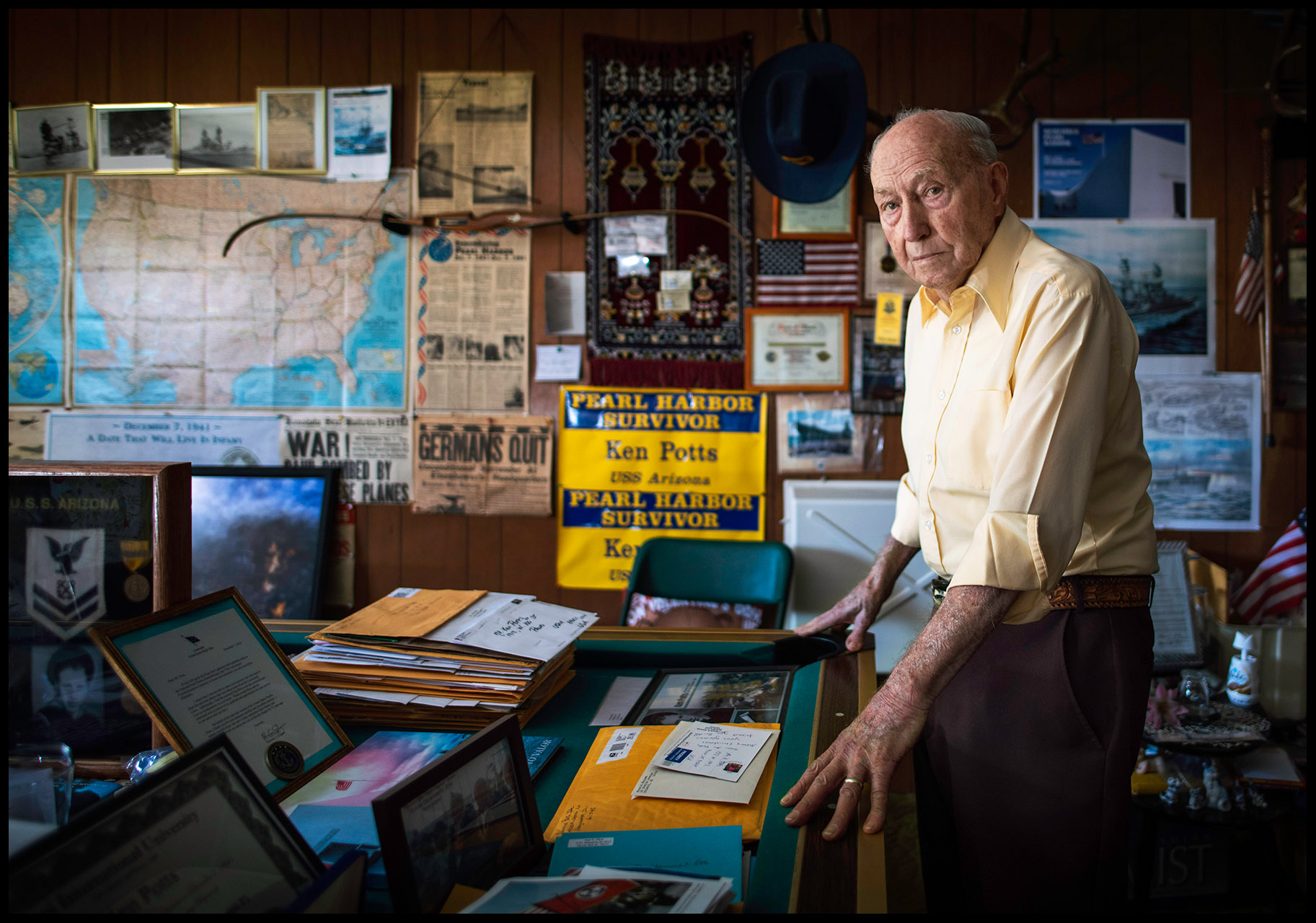
Ken Potts
1 of 2 living survivors of
sinking of USS Arizona
Ken Potts
Boatswain Mate 1st Class, U.S. Navy
1939-1945

Coxswain Ken Potts
Bremerton, WA, 1940
We couldn’t think much about it. (The Pearl Harbor attack.) You don’t think much of anything, I guess. You’re in shock. All you worried about was staying alive.
I was born in 1921 on a farm in Illinois, a mile off Route 66. We moved into town when I was 12. I went to school in a one-room schoolhouse where one teacher taught eight grades. I graduated from the eighth grade, then worked on the farm. When I was 16 I went into the CCC for six months. I joined the Navy in 1939 when I was 18 because work was scarce.
They sent me to the USS Arizona in December, 1939. I was a crane operator. Anything that came on or off the ship was done by crane. I was a boatswain’s mate in the Fifth Division, which maintained the small boats we used to go ashore. In 1940 they put our ship in dry dock and made a lot of changes including adding different guns. We knew war was coming but we didn’t expect it that quick. We were doing all kinds of training at sea.
At Pearl Harbor one division of ships would go out for a week and the other would come in. We came into Pearl Friday afternoon, the 5th of December. We spotted submarines, but we didn’t think much about it. We were in Honolulu on Sunday morning when the Japanese attacked. When we got back to Pearl, everything was burning because of the oil on the water. Going back to the ship we had to drag sailors out of the oily water. We couldn’t think much about it. You don’t think much of anything, I guess. You’re in shock. All you worried about was staying alive. I am one of two two living survivors of the sinking of the USS Arizona. I wouldn’t take a portion for the experience, but I wouldn’t give a penny to go through it again.
When I got back to ship the torpedoes had already been dropped and they were strafing. Then the big bomb hit—the one that almost broke the ship in half. The concussion from the explosion blew the water away from the ship. The Oklahoma was tied up in front of us and they could see almost the whole Arizona sitting in very little water. We were on the afterdeck. By then, nobody could get up from below. That’s where most of the 1,177 were killed.
When the officer gave the command to abandon ship, some went hand-over-hand on those lines to Ford Island and others swam. The fact that Ford Island was there, saved a lot of lives. All the guns and ammunition were locked up when we were in port. I learned one thing on December the 7th: a gun is no good without ammunition and you can’t do much fighting. When I was on Ford Island, I found a Colt .45 pistol and I carried it with me until the end of the war.
They wouldn’t let any ships come into the harbor. They needed a boatswain’s mate on the oil tanker outside the harbor and that’s where they put me. Every ship coming from the States and headed for the South Pacific refueled at Pearl Harbor. There was a fancy yacht with two big Chrysler engines that someone confiscated. They needed a boatswain’s mate to run that and put me in the port director’s office. That’s where I stayed until the war was over, which was darned good duty. My best day in the Navy is when I survived December 7th, 1941. It was also my worst day.
I got back home in September, 1945 and was discharged as boatswain’s mate first class. I became a carpenter and built homes in Decatur and Denver. I came to Utah in 1946, still doing carpenter work. We owned a used car lot for 30 years. Doris and I have been married for 63 years. {02-20-2020 • Provo, UT}